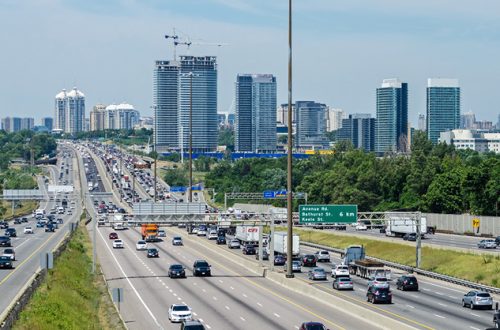On June 27, 2019, Professional Engineers Ontario (PEO) released a report by the United Kingdom-based Professional Standards Authority (PSA) on its performance as a regulator. The PSA’s report entitled “A review of the regulatory performance of Professional Engineers Ontario” was based on a review of PEO documentation and interviews with PEO staff, Council, committees and external stakeholders, including the Ontario Society of Professional Engineers (OSPE), conducted between December 2018 and April 2019. The report covers three areas:
- Licensing and registration;
- Complaints, discipline, compliance and enforcement; and
- Professional standards and guidance.
The paper notes that “the background of the decision of PEO’s Council to commission this review included expressed internal and external concern that PEO was not sufficiently focused on its mandate to protect the public, that its practices and processes were not in line with the principles of Right-touch regulation and that it could learn from best practice in professional regulation elsewhere.” (page 61)
Measured against standards that were agreed to in advance of the review, the PSA report found that:
- PEO meets one Standard of seven for licensing and registration;
- PEO meets six Standards and partially meets one of 11 for complaints, discipline, compliance and enforcement; and
- PEO meets one Standard and partially meets two of four for professional standards and guidance.
OSPE has been informed that PEO Council has accepted the report in its entirety and is developing an action plan to implement the following recommendations:
Summary of 15 Recommendations
- Review all committees, subcommittees and working groups to ensure they are both necessary and fit for a regulatory purpose
- Clarify the roles of Council members, Staff and volunteers
- Consider if Chapters are either necessary or desirable in delivering functions as a regulator
- Implement all the recommendations of the OFC in his report of 2014 and his subsequent letters, and consider the way negative language is used about everyone who is not a licensed P.Eng. and describe people as what they are rather than what they are not
- Simplify and speed up the process for application for a professional engineering licence and discard the discriminatory aspects of written examinations, a Canadian year of experience and face to face interviews
- Review and revise all current licensing categories and designations and eliminate those that do not directly contribute to protection of the public
- Keep the public register of licensed engineers and other public directories published by PEO complete and up to date
- Require licensed engineers employing another engineer to check their registration status
- Establish a formal process for keeping engineering standards up to date and relevant
- Revise PEAK program to ensure it is outcome-focused and achievable by licensed engineers, and then make participation in this CPD program mandatory
- Review approach to complaints and discipline:
- Take a more confident approach to interpretation of legislation, seeking to protect the public rather than itself
- Enforce guidance
- Pay more regard to professional conduct and ethics
- Give fuller reasons for disciplinary decisions and publish them
- Members of the COC and the DIC should not be drawn from members of PEO Council
- Commission a full digital strategy including implementation of an electronic management system and a database to manage licensing and C of A applications, CPD and complaints and discipline
- Work with the Attorney General’s office to seek changes to its statute to modernize its organization and regulatory powers
- Council should assess and implement these recommendations. It should require an action plan and time-frame for implementation from its executive staff. When it approves the action plan, Council should commit the necessary resources to deliver it.
Why is OSPE getting involved in this, and how does PEO’s Regulatory Review impact the engineering profession?
OSPE was created in the year 2000 to advocate for and protect the reputation of the engineering profession. Without a strong regulator focused on protecting the public, public perception of the engineering community in Ontario will be in jeopardy. OSPE has been advocating for several of the above recommended changes at PEO for years.
OSPE exists to support the entire engineering community in obtaining licensure and going on to thrive in engineering. As the advocacy and membership association for engineers, it is OSPE’s responsibility to advocate to government, media, the public, industry, academia, and the provincial regulator, PEO, to ensure that the interests of engineers, graduates, interns and students are protected.
Report Highlights
Click on the headings below to view extracted quotes from the PSA report.*
*Please note this is not a fulsome summary – refer to the full report for a complete view of all commentary regarding the topics listed below, and several others which are not outlined here.
“We mean no disrespect to the hard-working engineers who make up the majority of PEO’s paid and voluntary workforce but a good engineer does not automatically make a good regulator, although that seems to be the assumption behind PEO’s understanding of self-regulation.” (page 32)
There is internal tension within PEO over whether it should be defining itself through the boundaries of more traditional engineering roles and thus restricting the range of the P.Eng. licence or if it should be aiming to embrace an ever larger range of engineering modalities, growing its register but blurring the boundaries of who can be a licensed professional engineer. Its task as a regulator is challenging for these reasons. It needs to be more agile in its approach but this is not helped by the way it is organized through a complex web of committees or by how it interprets its legislation.” (page 27)
“The Registration Committee hears registration appeals. We found that panels conducting Registration Committee hearings and those conducting ERC interviews are not required to include at least one member who is representative (in gender, race, background) of the applicant who is appealing or being interviewed. We observed a hearing involving an international applicant where not one member of the panel, the expert witness or PEO legal counsel were themselves of an ethnic minority background and find this apparent disregard for equality concerning.” (page 38)
“The current licence reinstatement processes do not demonstrate alignment to the principle of fairness… We found that members whose licences lapse for non-payment are even, in some cases, treated more severely than those who seek reinstatement after having had their licence suspended or revoked through Discipline. It is a widely held view amongst those we heard from, that members who resign can easily get reinstated without any scrutiny or focus on their professional development activities during their absence. This is perhaps reflective of an association rather than a regulator’s mindset.” (page 38 & 39)
..in our review of the member directory in late January 2019, we noted that some member profiles indicated that reprimands have been delivered, or that terms, conditions or limitations have been placed on their licences but no corresponding discipline history or information was included under their Disciplinary history. In one example, the discipline history of a member notes that his licence was revoked, yet the general licensing section said that he resigned. In two other random searches, the members’ profiles indicate that they ‘shall not engage in the practice of professional engineering’ and yet in both cases, their licence status was noted as ‘current’…” (page 40 & 41)
The Council has approved the PEAK program but because the engineering profession continues to widely indicate its disapproval of and lack of support for the program, Council has not proceeded to make participation mandatory.
Mandatory participation of regulated professionals in a continuing competency program with corresponding assessments to validate results represents international best practices and many of those who spoke to us agreed that this should be pursued for engineers in Ontario.” (page 42)
“The DIC has the power to control whether or not names of members would be published yet no defined criteria to guide the DIC in such decisions have been articulated or implemented. There are numerous examples of decisions published without member names in the Gazette part of Engineering Dimensions prior to the amendments coming into force in December 2017. Such lack of transparency is not aligned with public interest or protection.” (Page 49)
“It is a widely held view among those who provided evidence to us, that it is very hard to lose a licence and that the DIC generally puts the interests of the members and PEO before that of the public.
We think PEO should consider publishing all disciplinary decisions on a suitable accessible platform to provide greater transparency and search capabilities for the public.” (page 52)
“We are concerned in particular about the inherent unfairness of the licencing process, its potential for bias and PEO’s slow response to criticism from the OFC.” (page 58)
“…by not setting standards for engineering practice but restricting itself to guidance PEO limits the extent to which engineers can be held to account for poor practice. We were told that their legal advice was that failure to follow guidance could not be the basis for disciplinary action. But this interpretation was disputed by others. We note that legal advice can differ between lawyers and that the correctness of that advice can only be determined by the Court. We consider that PEO should take a less cautious approach and be more open to challenging precedent to test the range of its powers in court when it judges it in the public interest to do so.” (page 59)
“If the Council is to remedy the weaknesses in its performance as a regulator identified in this review it will need to redirect its resources very substantially towards professionalizing its regulatory processes and procedures and reducing its reliance on volunteers. The volunteers who run PEO are expert professional engineers, but they are inevitably amateur regulators. PEO needs to adopt better business and regulatory practices, to focus on professional regulation not on being an association of engineers and to seek efficiency and cost-effectiveness. Significant investment in a corporate digital infrastructure will be necessary. This change of focus will require courage to challenge the existing culture and established ways of working.
There are many people in PEO who are committed to it being an effective regulator and who seek to protect the public and maintain standards of engineering practice. They are hindered, not helped, by its complicated, volunteer-led structure and its lack of clarity about its role and responsibilities.” (Page 59)
“PEO does not seek out, embrace or demonstrate through its current practices and processes that is it a good regulator. A good regulator puts energies and resources into the right things. PEO commits much energy, human and financial resources into things that have more to do with advocacy for and service to the professional interest than it does to ensuring that risks of harms from engineering practice are identified and are appropriately mitigated.” (page 60)
“The leadership of PEO, both voluntary and staff, do have together the skills and energy to make the necessary changes to its structure, processes and performance. Our conversations, observations and engagement with PEO and its people over the last six months leads us to believe that many also have the will to change. We hope that this report and the recommendations we make below will assist them in that endeavour.” (page 60)





Comments (7)
How can PEO be set back on course?
If you aren’t practising engineer in one of many contexts and disciplines, you shouldn’t be called/licenced as a Professional Engineer.
You need another title, like P.Eng. (Hon) or P.Eng. (ret’d), so you don’t confuse the public. Send the Licence Certificates back to the practitioners, with a gold embossed hologram stamp “Thank you for your service to the Public” instead of recalling them (yes, they do that!), and allow the retired member to keep it on the wall proudly or pass it on proudly as a legacy.
That would purge PEO and cut the organization in half, and force it to increase its fees to cover the cost and benefits and pensions of the functionaries on Sheppard Ave.
Nobody gets an industrial exemption, ever. You are in or you are out as a Professional Engineer, and employers should make room for protection of the public in everything that they do.
Then the regulator can focus on its mandate to protect the public.
See the article from Florida S PE magazine, April 2019 issue, by Danielle Boykin, about the Massachusetts regulator saying enough is enough, after the gas explosions there caused by an non-PE signing off on work: https://fbpe.org/massachusetts-ends-licensing-exemption-after-explosion/
Talk this point up whenever you can!
Very insightful comment, Daniel. Your suggestion is one of many changes that could take place now that this report is public.
About time for these things to be said.
Excellent work, OSPE, on standing your ground and pushing this through! But we need to continue the push, and not let up. Perhaps OSPE might consider taking the lead and putting LELs at the same membership level as PEngs?
Interesting idea, Franco. We don’t have plans to do that just yet, but based on the changes that will hopefully be happening with PEO, many things could change here at OSPE, as well.
I’m a Professional Licenced engineer in USA, Australia, and the UK. Since moving to Ontario and joining PEO, I’m shocked how backward the organization is. This OSPE report is spot on, if anything it let’s PEO off easy! The public deserve better.
In the UK British Gas describe their installation and maintenance plumbers as registered professional engineers. Sky TV call their Installers ‘Professional Engineers’, etc.
The Engineering Council is the UK regulatory body for the engineering profession. It declares engineering technicians to be ‘professional engineers.’
Engineer-societies internationally need to apply their enormous clout to bring about proper change. Obviously the softly-softly approach over the many years has not worked. 🙂
Great summary and call to action to break the status quo. I hope OSPE may help in this challenging transition for PEO. It will require a lot of leadership from the industry in Ontario to implement these changes. Glad to assist from a technological perspective, if you or PEO wish to evaluate best practices in digital sealing.
Leave a Comment